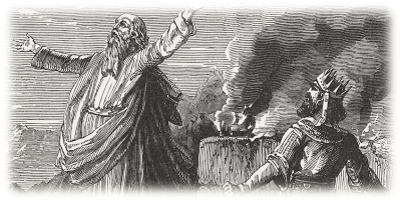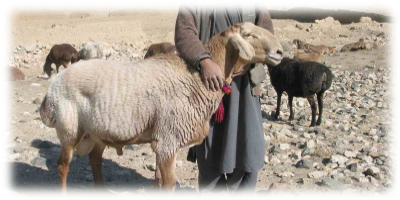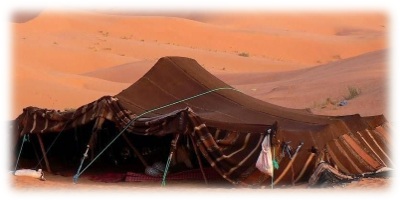Have you ever wondered, "Why is the land of Israel so important?" Or, "Why is ha'satan the ruler over this word"? Well to find out why, we have to look back at the first chapters of B'reshit (Genesis), and learn a bit about archaeological discoveries.
To start, we must take a look at covenants. I remember growing up in the Church of God, and many times I heard covenants described as "Everything that is mine, is yours, and everything that is yours is mine", which is OK in describing a parity covenant like Jonathan and David had, but there are other types. Covenant is the very back bone of Scripture. What I want to detail and focus on are the;
- Suzerain/Vassal covenant
- Royal land grant covenant, along with the Royal messenger.
These, once you understand them, are everywhere in Scripture.
Let's start with Genesis chapters 1 and 2.
Gen 1:26 And Elohim said, Let us make man in our image, after our likeness: and let them have dominion over the fish of the sea, and over the fowl of the air, and over the cattle, and over all the earth, and over every creeping thing that creeps upon the earth.
Gen 1:27 So Elohim created man in his own image, in the image of Elohim created he him; male and female created he them.
Gen 1:28 And Elohim blessed them, and Elohim said unto them, Be fruitful, and multiply, and fill the earth, and subdue it: and have dominion over the fish of the sea, and over the fowl of the air, and over every living thing that moves upon the earth.
There are some things here that, without the Hebrew and historical information, cannot be seen easily. First is a look at verse 26's statement of "Let us". The word "elohim" is a plural word used to refer to a plural 'strong authority', or a reference to the one True God. This a bit a side note, and one that Jeff and I have different takes on, but I believe this refers to YHWH and the divine council discussed in Job 1& 2, along with various mentions in Psalms, like PSA 82. Not that this idea is mandatory, yet I feel it is. The 'likeness' that Adam was created in was as a Strong Authority on earth, and was commanded to use this authority to subdue the earth.
These verses in chapter one are a 1st example of a Suzerain/Vassal covenant seen in Scripture. In the Ancient Near East, treaties between kings were a common occurrence. These were treaties drawn up among equals, and between stronger and weaker kingdoms, and mostly outlined agreements to honor each other's boundaries, to maintain trade relations, return run-away slaves, etc. These treaties are preserved in the Mari Tablets and in the Amarna texts (Dr. Kline's Lecture notes: "Suzerain Treaties & The Covenant Documents the Bible") and you will find this treaty referred to often as Hittite in origin since the tablets found were of Hittite in origin.
When there was a covenant between a stronger and lesser kingdom, it id referred to as Suzerain(superior king)/Vassal(Lesser King) covenant. In these agreements, autonomy within their own borders is retained, and there was an alliance in wars and protection. If the vassal had issue with another vassal, they would bring it before the suzerain. This is the case in Gen 1:26-28, the Father created Adam to be the vassal king of the garden in Eden, and to colonize this world. Like in the Lord's Prayer; " thy kingdom come, thy will be done, On earth AS IT IS IN HEAVEN.
Dr. Kline, in his lecture notes on the "Suzerain Treaties & The Covenant Documents the Bible", mentions that "[t]hese Suzerain/Vassal covenants open with these two sections:
- The identification of the Suzerain by his name and titles;
- The historical survey of the Suzerain's dealings with the vassal, with the purpose of illustrating to the vassal how much the Suzerain has done to protect and establish the vassal who therefore owes submission and allegiance to the Suzerain.
Dr. Kline also states that "[T]hese two sections are referred to as the preamble and the next section of these treaties list the 'stipulations.' What the vassal is required to do is spelled out in principal and detail. This section is often concluded with the requirement that the vassal deposit his copy of the treaty in his temple, where he is to occasionally read and study it to refresh his memory concerning his duties.
The last section of the S/V covenant contains the blessings and curses of the Suzerain. If the stipulations are met by the vassal, he will receive the Suzerain's blessings, which are listed. If the vassal fails to meet the stipulations, he will receive the Suzerain's curses, which are also listed.
This can be easily seen here:
Deu 30:19 I call heaven and earth to record this day against you, that I have set before you life and death, blessing and cursing: therefore choose life, that both thou and thy seed may live:
The Suzerain would keep one copy of the covenant and the vassal would keep one copy of the covenant. This can be seen with the giving of the Torah, and the reason there were 2 tablets. Typically the most widely used rite was that of cutting the bodies of animals in halves and placing them in two rows with enough space between for the two parties of the treaty to walk side by side, as with the Avrahamic covenant, but this isn't seen until after the fall of Adam and death (separation) was brought into the world. As they walked between the pieces, they were vowing to each other, "May what has happened to these animals, happen to me if I break this covenant with you." This is why that Avraham was put to a deep sleep. It was a one sided covenant, to which, if Avraham or his descendant break, per-incarnate Yeshua would have this done to Him.
Dr. Kline's lecture notes also document the following concerning Exodus 20 and Deuteronomy:
Covenant Documents of the Bible Patterned After Suzerain Treaties:
Exodus 20
- (1-2)"Yahweh" is the Suzerain who delivered this Preamble to Moses, the vassal-lord who represents the people under the authority of the Suzerain.
- names & titles = "I am the Lord, your God."
- historical prologue = "Who brought you out of Egypt..."
- (3-17) Stipulations with selected blessings and curses.
- stipulations = the 10 commandments;
- blessings and curses = (5b-6); (7b); (12b).
Dueteronomy
- (This entire book of Moses is saturated with Suzerain Treaty language and structure. It is not properly the treaty document itself, but it is based upon such a treaty, making reference to it often. Below are some examples.)
- (4:32-40) Historical Prologue language and structure;
- (4:44 - 5:21) Stipulations;
- (6:4-25) Blessings and Curses;
- (8) Reflects all the sections of a suzerain treaty;
- (11) " " "
- (17:14-20) Reflects the relationship of a vassal king to the Suzerain;
- (20) Reflects the language and structure of war-time arrangements between a Suzerain and his people;
- (27-28) Curses and Blessings;
- (29) Covenant Renewal;
- (30:11-19) Classic presentation of Ancient Near East Treaties!
One more term I'd like to bring briefly introduce and discuss for clarity is the Royal Messenger. Daniel Mcgir states in his article about the royal messenger:
Royal messengers in the ancient Near East had numerous responsibilities and roles granted to them such as being a vassal king, a prophet, a vizier, or one who intercedes on behalf of the people. All of these roles are initiated with the legality of being sent" with all the king’s authority.
The training of the RM was intense and lifelong. The RM was usually the son of the king, and ha to learn every mannerism of the king, as well as the very mood and nuance of the message. He came, "Not speaking his own words, but the Fathers". Kings never physically met. The RM was the contact, and he carried all the authority of the king, and had to be treated as such. This concept helps to clarify Yeshua in the Tenakh, and answer the verses that state that "No man has ever seen nor heard the Father". The YHWH in the Tenakh is most often the RM coming in the "name of the Father". This was a bit of a side note, but the information is needed in the complete understanding of the covenant function.
Back the the S/V covenant, we can now see that this covenant was being initiated in Gen 1. Adam became king of the earth, and was to have dominion over the earth and fill it. To colonize the earth with the Kingdom of YHWH. The language between the 2 kings used words like: father to the suzerain, son to the vassal, and love. These are covenant words. No matter how they felt about each other, they treated each other accordingly. Love is actionary, like the Hebrew language concept goes. It isn't about harm feelings, but how you treat each other.
Adam was also grated a land/kingdom by YHWH. Gen 2 introduces us to this covenant, the Royal Land Grant covenant. A RLG gives, by the suzerain, land to another. Royal grant covenants have been found in Hittite, Babylonian and Neo-Assyrian texts and most recently in materials from Ras Shamra. They are particularly known from the Babylonian kudurru or boundary stones, texts which cover a period from B.C. 1450 to B.C. 550, the period of Babylonian history during which Boundary-stones were employed for the protection of private property.
The first characteristic of the Royal grant is seen in the basic posture of the covenant, while in the Suzerain-vassal covenant, the rights of the Great King are guaranteed by the treaty. In the Royal grant the rights of a favored individual are protected, and the curses are directed against any who would infringe upon the rights of the land owner.
Once the land is granted, that land cannot be taken away from the recipient, but if the recipient rebels, he loses access to the land. Once the decedents turn back the the suzerain, they have full access back. The land is never taken away, just his access. This is the reason for all the fight over the land of Israel. It belonged to Adam, and was the garden in Eden. Once His decedents return to him, they will have all the land for the restoration of all things. Let us take a look at Gen 2:Gen 2:7 So the LORD God formed the man from the dust of the ground, breathed life into his lungs, and the man became a living being. Gen 2:8 The LORD God planted a garden in Eden, toward the east, where he placed the man whom he had formed.
Gen 2:15 The LORD God took the man and placed him in the Garden of Eden in order to have him work it and guard it.
Here we can see YHWH placed man in the garden with the stipulations: 1) Avad - work, serve 2) shamar – guard, protect. As long as he obeys and does his part, he has a kingdom, but he allowed the "nachash'' to shame and defile his household, which dishonored his reign. Since he ate of the fruit too, rather than restoring his bride, he lost the kingdom
The nachash/serpent is defined as:
H5175 נָחָשׁ nâchâsh
BDB Definition:
1) serpent, snake
Part of Speech: noun masculine
A Related Word by BDB/Strong’s Number: from H5172
נָחַשׁ nâchash
BDB Definition:
1) to practice divination, divine, observe signs, learn by experience, diligently observe, practice fortunetelling, take as an omen
I find it important to take note of this "to learn by experience", because this truly defines the role of ha'satan. Many scholars connect the serpent and ha'satan, but for a different reason than I do. Jerome, the translator of the Vulgate, summed up the references in Revelation to serpent and the Genesis as the same entity, but the rule of the dishonored king losing his land is my point of connection, along with:
2Co 4:4 in whom the god of this age has blinded the thoughts of the faithless ones, so that the illumination of the gospel of the glory of Christ, who is the image of God, should not shine on them.
Here you see that ha'satan is the god of this world, and Adams shaming is the reason. Adam was dethroned, and in addition to the nachash become "god/el of this world, he also gained the authority to join the divine council in Job 1 & 2.
Hopefully I have conveyed the basic understanding around this topic well enough to give a basic understanding of the topic. Adam was coronated king, and given a kingdom, with the basic command to guard and protect. He failed miserably, and lost the strong authority he once had. He would have been at the government meetings of the divine council too, but he subjugated all his authority, and now has to "learn by experience". But praise YHWH, the restoration of all things is coming. When the kingdom is restored back to us, the kingdom of priests that we strive to be. The land will be restored the the sons of Adam, and the 2nd Adam will rule for 1000 years until He hands the keys to the Kingdom over to the Father/

Like what you’re discovering? Continue the journey from Bible reader to translator.
|






